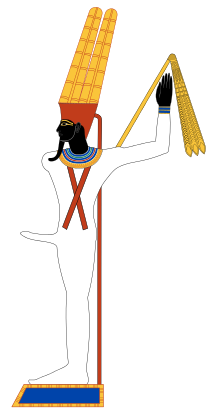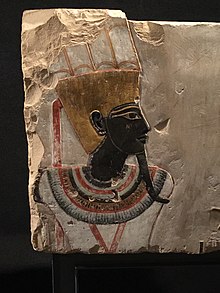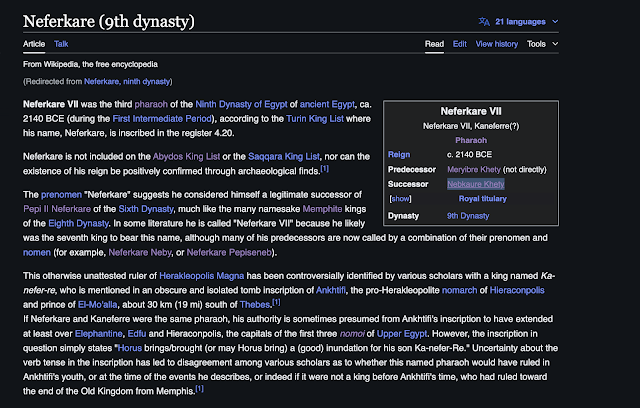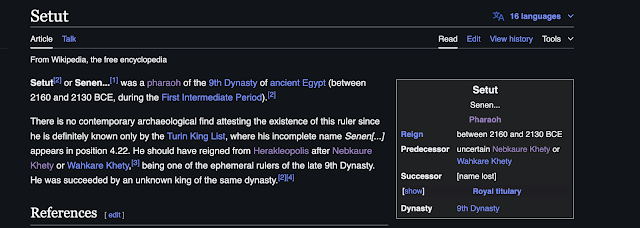Men KA Re 4100 YBN ~~ WAHIBRE IB IA U 3600 YBN
od)
| Min | ||||
|---|---|---|---|---|
 The dark-skinned fertility god Min, with an erect penis and a "flail" | ||||
| Name in hieroglyphs | ||||
| Major cult center | Qift, Akhmim | |||
| Symbol | the lettuce, the phallus, the bull, the belemnite | |||
| Parents | Isis | |||
| Consort | Iabet Repyt Isis | |||
| Equivalents | ||||
| Greek equivalent | Pan, Priapus | |||
Min (Ancient Egyptian: mnw),[1] also called Menas,[a] is an ancient Egyptian god whose cult originated in the predynastic period (4th millennium BCE).[2] He was represented in many different forms, but was most often represented in male human form, shown with an erect penis which he holds in his right hand and an upheld left arm holding a "flail".
| Part of a series on |
| Ancient Egyptian religion |
|---|
 |

Min's cult began and was centered around Coptos (Koptos) and Akhmim (Panopolis) of upper Egypt,[4] where in his honour great festivals were held celebrating his "coming forth" with a public procession and presentation of offerings.[2] His other associations include the eastern desert and links to the god Horus. Flinders Petrie excavated two large statues of Min at Qift which are now in the Ashmolean Museum and it is thought by some that they are pre-dynastic. Although not mentioned by name, a reference to "he whose arm is raised in the East" in the Pyramid Texts is thought to refer to Min.[5]

His importance grew in the Middle Kingdom when he became even more closely linked with Horus as the deity Min-Horus. By the New Kingdom he was also fused with Amun in the form of Min-Amun, who was also the serpent Irta, a kamutef (the "bull of his mother" - a god who fathers himself with his own mother[6]). Min as an independent deity was also a kamutef of Isis. One of Isis's many places of cult throughout the valley was at Min's temple in Koptos as his divine wife.[7] Min's shrine was crowned with a pair of bull horns.[5]
As the central deity of fertility and possibly orgiastic rites, Min became identified by the Greeks with the god Pan. One feature of Min worship was the wild prickly lettuce Lactuca serriola – the domestic version of which is Lactuca sativa (lettuce) – which has aphrodisiac and opiate qualities and produces latex when cut, possibly identified with semen. He also had connections with Nubia. However, his main centers of worship remained at Coptos and Akhmim (Khemmis).[8]

Male deities as vehicles for fertility and potency rose to prevalence at the emergence of widespread agriculture. Male Egyptians would work in agriculture, making bountiful harvests a male-centered occasion. Thus, male gods of virility such as Osiris and Min
























































Comments
Post a Comment
No Comment